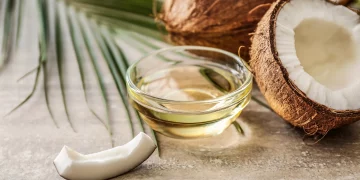Introduction: The Renaissance of Herbal Biohacking
In an age dominated by cutting-edge technology and high-performance optimization, the concept of biohacking—self-experimentation to improve physical and mental function—has captured popular imagination. Interestingly, while silicon chips and wearable sensors often come to mind, ancient herbs are quietly experiencing a resurgence as biohackers tap into nature’s pharmacopeia enhanced by modern biotechnology. This article explores how time-honored botanicals are being revisited through the lens of scientific innovation, targeting stress regulation, cognitive performance, and holistic wellness.
What Is Biohacking? Bridging Tradition with Innovation
Biohacking broadly refers to interventions—ranging from diet and exercise to supplements and technology—that individuals use to optimize their biology. Traditionally, herbs have played vital roles in human health across cultures for millennia, yet many of these plants are now being studied with molecular biology techniques, genetic profiling, and precision extraction methods. Modern biohacking with herbs merges ancestral wisdom with contemporary scientific rigor, aiming for targeted effects on stress modulation, energy, focus, and longevity.
Historical Perspective: Herbal Medicine Across Cultures
Herbal medicine forms the backbone of Traditional Chinese Medicine, Ayurveda, Indigenous healing practices, and Western herbalism. Plants like Ashwagandha, Rhodiola, Ginseng, and Holy Basil have long been celebrated for adaptogenic properties—helping the body resist stress and restore balance. These traditional uses lay a foundation for understanding how botanical compounds influence neuroendocrine and immune pathways. Recognizing the historical context is essential to appreciate why these herbs are prime candidates for modern biohacking applications.
Scientific Advances Enabling Herbal Biohacking
Advances in phytochemistry, genomics, and bioinformatics allow researchers to isolate active compounds and understand their mechanisms at cellular and molecular levels. Biotechnology techniques such as nanoparticle delivery, bioavailability enhancement, and synthetic biology have improved herb efficacy and consistency. For instance, liposomal encapsulation increases absorption of herbal actives, while metabolic profiling identifies precise biomarkers that track herbal effects on stress hormones like cortisol and neurotransmitters such as serotonin and dopamine.
Top Herbs Being Biohacked for Performance and Stress Regulation
- Ashwagandha (Withania somnifera): Studied for its ability to lower cortisol, improve sleep quality, and boost cognitive function. Biotech enhancements focus on extract standardization and bioactive concentration.
- Rhodiola rosea: Known for reducing fatigue and enhancing mental endurance, modern research emphasizes adaptogen synergy with exercise recovery.
- Ginseng (Panax ginseng): A classic stimulant and immune modulator, current biotech approaches explore ginsenoside bioengineering for targeted energy metabolism.
- Holy Basil (Tulsi): Revered for anti-inflammatory and anxiolytic effects, innovations aim at maximizing active phytochemicals and reducing inter-batch variability.
- Lion’s Mane Mushroom (Hericium erinaceus): Its neurotrophic properties are being enhanced through fermentation technology for cognitive biohacking.

Mechanisms of Action: How Herbs Influence Stress and Performance
Herbs interact with multiple biological systems: hypothalamic-pituitary-adrenal (HPA) axis regulation, modulation of neurotransmitter pathways, antioxidant activity reducing oxidative stress, and enhancement of mitochondrial function for energy metabolism. Understanding these mechanisms elucidates how botanical biohacking can complement lifestyle interventions such as mindfulness, exercise, and nutrition.
Personalized Herbal Biohacking: Genetic and Microbiome Insights
Emerging precision health tools analyze individual genetic variants and gut microbiome composition to tailor herbal interventions. For example, genetic polymorphisms affecting neurotransmitter metabolism might influence how one responds to Ashwagandha or Rhodiola. Likewise, gut bacteria modulate herbal compound bioavailability, highlighting the need for personalized protocols. Companies now offer genetic testing combined with herbal supplement recommendations for optimized biohacking.
Combining Herbal Biohacking with Digital Tools
Wearable sensors that monitor heart rate variability (HRV), sleep stages, and stress biomarkers enable real-time feedback on how herbs impact physiology. Mobile apps guide dosing schedules, log mood and cognitive performance, and integrate with AI-driven coaching for adaptive biohacking plans. This synergy between ancient herbs and modern digital technology exemplifies next-generation wellness optimization.
Safety, Quality Control, and Regulatory Considerations
While herbal biohacking offers promise, safety concerns remain. Contamination, adulteration, and inaccurate labeling plague the supplement industry. Biotech advancements support quality assurance through DNA barcoding and metabolomic fingerprinting. Regulatory landscapes vary globally, with some countries recognizing herbs as medicine while others categorize them as supplements. Consumers must exercise caution, seek reputable sources, and consult healthcare professionals.
Case Studies: Success Stories and Experimental Protocols
Profiles of biohackers who incorporate herbs into their routines reveal benefits in stress resilience, mental clarity, and physical endurance. Some experiment with microdosing adaptogens alongside quantified lifestyle changes. These anecdotal accounts, while preliminary, inspire further clinical research and personalized experimentation.
Future Trends: Synthetic Biology and Designer Botanicals
Cutting-edge synthetic biology aims to engineer microbes that produce rare or enhanced phytochemicals sustainably. Designer botanicals with optimized bioactive profiles could revolutionize herbal biohacking. Integration with CRISPR technology and AI-driven discovery platforms will accelerate identification of new herb-based bioactives, expanding the biohacker’s toolkit.
Challenges and Ethical Considerations in Herbal Biohacking
Issues include balancing traditional knowledge with scientific innovation, ensuring equitable access to biotech-enhanced herbs, and avoiding overhype. Ethical biohacking respects biodiversity, supports indigenous intellectual property, and promotes transparent claims. It also encourages critical evaluation over blind adoption of herbal “hacks.”
Practical Guidelines: How to Start Biohacking with Herbs Safely
- Begin with well-researched adaptogens at low doses, tracking effects carefully.
- Combine herbs with lifestyle pillars: balanced diet, exercise, stress management.
- Use digital tools to monitor physiological responses.
- Consult healthcare providers before combining herbs with medications.
- Prioritize products with third-party testing and clear sourcing.
Conclusion: Nature Meets Technology in the New Era of Herbal Biohacking
The fusion of ancient herbal wisdom with modern biotechnology offers exciting pathways to enhance human performance and regulate stress naturally. While the science is still evolving, current evidence supports a role for well-chosen, quality-controlled botanicals as part of comprehensive biohacking strategies. As research and technology advance, herbal biohacking could become a mainstream modality that empowers individuals to optimize their emotional and physical well-being through nature-informed innovation.










































